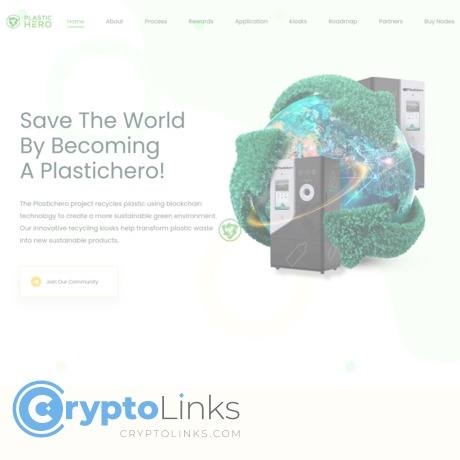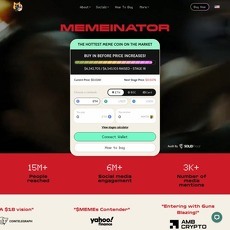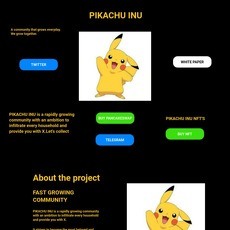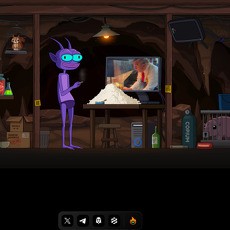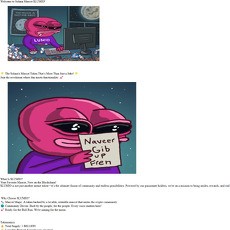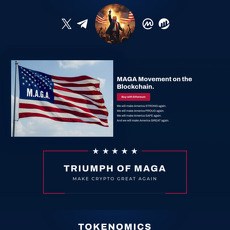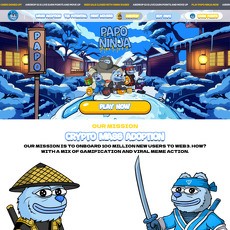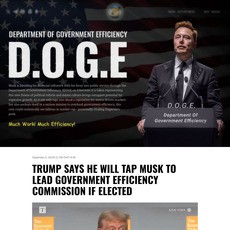Plastichero Review
Plastichero
plasticherocoin.com
If your website is on the scam list and you think that you are not a scammer, contact us. After you provide us with all the proof that you are in Crypto World with good intentions, we will delist you. Usually, you get in this category because you are hiding your team, you have a bad reputation(you are tricking, deceiving, scamming people), and you haven't got a written project whitepaper or is a shitty one....
Their Official site text:
1
2
Table of Contents
Abstract 3
Introduction 4
Massive Challenges 4
Now or Never 4
Not the Enemy 5
Executive Summary 6
Mission and Vision 6
Business Model 6
Recycling Process 7
Recycled Materials 7
Pyrolysis Process 8
Applications and Use-cases 9
Eco-Friendly Node Mining 9
Giving Back 9
Government Initiatives and Partnerships 9
Plastichero Project Features 11
Plastichero Recycling Kiosk 11
Plastichero Application 13
Plastichero Coins 13
Plastichero Shop 14
Plastichero Built-in Wallet 14
Plastichero Bridge 14
Technology 15
Blockchain Mainnet Features 15
Dual Delegated Proof of Stake Block Generation 15
Smart Contract Processing 19
3-Step Mainnet Process 19
Coin-Related APIs 20
Create 20
Transfer 20
Display Balance 21
Burn 21
Error Handling 21
Cryptocurrency 22
Mainnet PTH Coins 22
Mining PTH Coins 22
Mined PTH Distribution 23
Coin Utility 24
Road Map 25
Disclaimer 26
3
Abstract
The plastic pollution crisis is an urgent issue that has negatively affected the
environment in numerous devastating ways. These include overloaded dumps, landfills,
harmful emissions released by incineration, and polluted marine ecosystems.
It is the irresponsible disposal of plastic materials and plastic incineration that lead to
the crisis of climate change. Hence, it is imperative for us to make a real change.
To do so, we present Plastichero, a blockchain-based platform for reducing waste and
promoting a circular economy. The project will accomplish this through kiosks where
plastic waste can be deposited in exchange for Plastichero coins, which can be converted
to PTH tokens. Deposited plastic will be recycled to produce pyrolysis oil and high-quality
plastic flakes and pellets.
Plastichero’s own decentralized application (DApp) will be used to validate each
deposit of plastic waste and to allocate PTH coins accordingly. PTH coins can be
used to purchase food, beverages, and other items from participating stores and brands.
Transparency, transaction verification, security, immutability, accountability, and
value transfer can be achieved by utilizing Plastichero’s blockchain technology.
Additionally, all data on users’ DApp wallets including QR code verification will be stored
in the blockchain.
Plastichero is its own blockchain mainnet project, and mined mainnet coins will be
compatible with cryptocurrency wallets that support ERC-20 tokens through bridges.
4
Introduction
The earliest known records of mass plastic production can be traced back to the
Second World War and then again from 1960-70. Humanity began to replace steel and
paper materials with plastic as it was cheap, convenient, and versatile.
It is estimated that around 300 million tons of plastic waste are produced every
year. Of this waste 50% is single-use plastic materials of which only 9% is recycled.
What is worse is that plastic does not decompose as natural materials do, and so
disposing it via dumping poses an even greater problem.
Massive Challenges
Plastic waste is also a major contributor to the climate crisis. The burning of plastic
waste produces greenhouse gasses, such as carbon dioxide and methane, accelerating
global heating.
Plastic materials have also polluted oceans, lakes, and rivers, endangering thousands of
marine species on our planet. It is reported that approximately 8 million tons of plastic
waste are discarded into the ocean every year and an estimated 5 trillion tons of plastic
is in the ocean as of 2022.
Now or Never
We must act now before it is too late. According to the World Wildlife Fund, “the species
extinction rate is estimated between 1,000 and 10,000 times higher than natural extinction
rates — the rate of species extinctions that would occur if we humans were not around.”
5
Plastic pollution is contributing to mass-death in the ocean, most visibly by ingestion,
suffocation, and entanglement of hundreds of marine species. According to the World
Economic Forum, in a business-as-usual scenario, the ocean is expected to contain
more plastics than fish (by weight) by 2050. Science-based initiatives are needed to
change course and halt the destruction of ecosystems by plastic pollution.
Not the Enemy
Plastic itself is not the enemy. It is a useful material for a wide variety of applications
including packaging, building and construction, household and sports equipment, vehicles,
electronics and agriculture.
However, it becomes harmful to the environment when improperly discarded. Proper
management and recycling of plastic waste is a challenge, as it is generally more expensive
and time-consuming than the alternatives, leaving consumers with inadequate motivation
to recycle.
6
Executive Summary
Plastichero is pleased to present the executive summary of our company. Our goal is to
work toward a more sustainable and green environment, beginning with South Korea.
We intend to use blockchain technology to address plastic recycling issues.
Users, countries, businesses, environmental organizations, and, most importantly, the
planet will benefit from the Plastichero project.
Mission and Vision
The Plastichero Project is always evolving to offer users useful rewards and make
beneficial contributions to nations, companies, and environmental organizations.
Participating in the initiative helps to establish a sustainable, green environment for future
societies by using smart technology to alleviate the problem of plastic waste and
promote the circular economy.
Business Model
The project aims to address the problem of plastic waste — first in South Korea, and
then globally — through the use of kiosks and blockchain technology. Plastichero will
do this by recycling plastic waste into pyrolysis oil and clean plastic pellets and flakes.
Users will be able to recycle their plastic waste into the Plastichero kiosks that will be
accessible, easy-to-use, and innovative. Users will also have an interactive mobile
application where they can track their Plastichero coins. As incentive for user participation,
Plastichero will offer users cryptocurrency rewards.
7
Plastichero will generate profit by creating valuable commodities from plastic waste
deposited in its kiosks. Through cooperation with carbon emission allocators and businesses
that support outside reduction programs, the project is also investigating the prospect of
operating a carbon emission business.
Recycling Process
The Plastichero project aims to solve the problem of plastic waste with an eco-friendly
and cost-effective chemical method called pyrolysis. This process transforms waste plastic
into clean pyrolysis oil, which can be used as an alternative to kerosene and light oil.
Plastichero can help create a circular economy by using pyrolysis oil to create new
recycled products that are convertible back into pyrolysis oil. These recycled products
could range from chairs and tables to garbage bins and more.
The project can generate profit by selling carbon emission rights, renewable pyrolysis
oil, and high-purity plastic.
The Plastichero ecosystem and its distinct recycling method will eventually be
implemented in more countries to support their own green industry initiatives.
Recycled Materials
Plastichero will employ mechanical and chemical recycling processes to create valuable
commodities from plastic waste. These include high-quality plastic pellets and flakes for
use in manufacturing, pyrolysis oil that can be used as alternative fuel, and hydrogen gas
that can be supplied as a fuel to hydrogen stations.
8
Plastic pellets and flakes will be reclaimed from waste plastic by a mechanical recycling
process called M-rPET. Plastic flakes are primarily used in the production of synthetic
fibers for textiles, and are produced by sorting (by color and composition), grinding,
washing, separating (by gravity) and dehydrating waste plastic. The resulting flakes are
then packaged separately according to color and composition. Plastic pellets are used
in the creation of a wide variety of plastic goods, particularly by injection molding. To
create pellets, waste plastic goes through a similar process of crushing and washing
before being extruded and cut into pellets.
A separate, pyrolysis-based chemical recycling method, C-rPET, will be used to
produce pyrolysis oil and hydrogen from composite and film plastics. After crushing and
washing waste, the waste material is subject to pyrolysis, a process of thermal
degradation of organic materials under an inert atmosphere. Under pyrolysis, long carbon
chains are thermally broken down into useful fractions; in this case, syngas and pyrolysis
oil. Further processing will be applied to the syngas to produce 99.5% pure hydrogen
gas, while pyrolysis oil is obtained through a final process of condensation.
Pyrolysis Process
Plastichero will use a state-of-the-art rotary kiln plant to produce pyrolysis oil
free of heavy metals. The plant will have a processing capacity of 3,000 tons per
year and does not require any pretreatment.
9
Applications and Use-cases
The most important use case for the pyrolysis oil produced is in the manufacturing of
high-quality reusable plastic products. The project aims to achieve this by collaborating
with manufacturers and promoting resource circulation.
Plastichero’s pyrolysis oil has various applications, from fuel for large-scale demand
sources like heating systems and power plants to being processed in oil refineries. The
low-boiling carbides found in the oil can also be turned into naphtha through vacuum
distillation.
Eco-Friendly Node Mining
The Plastichero project maintains an eco-friendly node mining system with
energy-efficient nodes that are more akin to virtual machines than the conventional
energy-intensive hardware associated with mining. Its energy efficiency will also
improve over time as the mining difficulty will halve yearly.
Giving Back
Plastichero donates to charity to incentivize individuals and organizations to
contribute to the project’s sustainable waste management initiative. Furthermore,
the project aims to fund research and communities through outreach programs
and raise awareness about plastic waste reduction initiatives.
Government Initiatives and Partnerships
The Plastichero project intends to assist governments and businesses in
implementing the circular economy system. Sustainable economies all around the
world provide opportunities for Plastichero. The project will launch in South
Korea before expanding to other countries around the world.
10
The circular economy system is a regenerative system that aims to minimize waste
and pollution while conserving resources. The goal of the circular economy is to reduce
dependence on finite resources and create more sustainable business models.
The Plastichero project intends to help and contribute to private and public
organizations that are supporting this initiative. As sustainable business models
become increasingly common around the world, Plastichero will seek out and
partner with companies that are committed to sustainability.
For example, there are currently numerous countries with economies that are considered
to be sustainable. These include the Netherlands, Canada, Germany, New Zealand,
Denmark, Finland, Japan, Norway, Switzerland, and Sweden, among other countries.
Plastichero intends to begin operations in South Korea before extending to other
countries. South Korea now has a green industry initiative and a plan to become more
environmentally friendly by 2050. Within the country, the project will collaborate with
municipal governments, carbon emission allocation firms, and plant industries.
The Plastichero concept will eventually expand to other countries that prioritize the
circular economy. These could be from any continent but are most likely from Europe.
We will work with international governments and sustainable businesses from around
the world to ensure a more sustainable global future.
The project will initially be part of the South Korean government’s green industry initiative,
which aims to create export profits worth USD 81.3 billion by achieving carbon neutrality
and replacing crude oil by 2050.
11
Plastichero Project Features
Plastichero Recycling Kiosk
Prior to utilizing the Plastichero Project kiosk, users must register for membership
via a QR code.
Users will deposit their plastic bottles at the nearest Plastichero recycling kiosk.
These kiosks will store and reward users with Plastichero coins through the Plastichero
application. Plastic bottles inside the kiosk will be collected, processed, and then
recycled.
12
The Plastichero recycling kiosks are composed of 8 units as follows:
1. Inlet: Users will deposit their plastic bottles through the inlet on the kiosk. This inlet is built
with safety sensors to ensure that users’ hands are protected at all times.
2. Sensor unit: The unit senses the objects deposited into the inlet and enters the transfer
unit. The inlet door is closed, and the sensor unit sends a signal to place the deposited
object in the correct position. The transfer unit will read whether the object will be processed
or returned.
3. Transfer unit: The transfer unit will send the deposited object to the review unit. Once
reviewed, the transfer unit will send the object to the crushing unit if it is a plastic bottle.
However, the transfer unit will open the inlet and return the object to the user if it is not a
plastic bottle.
4. Review Unit: The review unit determines whether the deposited object is a plastic
bottle via weight measurement and video analysis. This unit will deliver these data to the
Plastichero server, where it will apply AI vision technology.
5. Crushing unit: This unit will crush accepted plastic bottles to maximize storage capacity.
6. Loading unit: The crushed plastic bottles will enter the loading unit. When the unit’s
contents reach a certain level, the kiosk will send a signal to the control server requesting
collection.
7. Control unit: The control unit operates and controls all procedures from steps 1 to 6.
It also sends and receives data to and from the management / database system.
13
8. Kiosk External Screen: An external screen on the kiosk that explains and guides the
user through the plastic disposal process. This screen can also display advertisements.
Plastichero Application
The Plastichero application boasts several useful features. These include using
using Plastichero coins to purchase items such as gift certificates and items such as gift
certificates or affiliate items. Additionally, users can use the built-in wallet inside the
Plastichero application to store their coins and tokens. Furthermore, the application
features a bridge that converts PTH mainnet coins into PTH Tokens.
Plastichero Coins
When plastic bottles are deposited into the kiosks, Plastichero coins can be mined.
Users can use the coins to buy products within the Plastichero App. Additionally, users
can bridge PTH coins to PTH ERC-20.
14
Plastichero Shop
These PTH coins will allow users to purchase products within the Plastichero
application for personal use or as gifts. The selection of products will vary from time to
time and will increase as we gain more affiliates.
Plastichero Built-in Wallet
Furthermore, Plastichero’s built-in wallet allows users to store their PTH mainnet coins
and their PTH Tokens. Users will not need to use a separate wallet and will conveniently
find all their Plastichero-related tokens within the application itself.
Plastichero Bridge
Through the Plastichero application, we will offer PTH mainnet coin holders the
feature to bridge their PTH coin into PTH Tokens. The bridge will have a
conversion ratio of 1 PTH:1 PTH Token. Users will be able to swap and trade their
PTH Token with other ERC-20 based tokens.
15
Technology
Plastichero will use blockchain technology for transparency, transaction validation,
and value transfers. All transaction data will be stored on the blockchain, starting from
the QR code validation to the crediting of crypto-based credits to the user’s DApp
wallet. .
Blockchain Mainnet Features
The Plastichero mainnet (PTH) boasts high scalability, fast transaction processing, and
robust security functions, thanks to its Dual Delegated Proof of Stake (DDPoS) consensus
algorithm.
PTH mainnet supports nuanced smart contracts, which may be deployed in the user’s
preferred language through the REST API call method. Smart contracts are registered on
the PTH blockchain after being approved by BPs, and are then ready to be deployed,
eliminating the need for any batching tools or writing of complex scripts by
users.
The Plastichero blockchain boasts a very high speed, generating a single block in only
three seconds. The PTH blockchain employs two hashing algorithms, the widely used
SHA 256 developed by the US National Security Agency and secp256k1, enabling fast
and efficient computation, with a capacity of 10,000 transactions per second.
Dual Delegated Proof of Stake Block Generation
The Dual Delegated Proof of Stake (DDPoS) mechanism generates blocks
through a network of 21 nodes, including 17 master nodes and 4 monitor nodes.
Master nodes are block producers (BPs), democratically elected by users to
validate transactions and add new blocks to the blockchain. Monitor nodes are block
observers (BOs), nodes that hold copies of the blockchain data but do not have the
ability to generate blocks. Instead, they are responsible for identifying network
congestion, and other threats to the reliability and stability of the blockchain.
Monitor nodes are randomly selected from the user population.
16
Under the DDPoS algorithm, the 21 nodes work together to produce a block every
three seconds. The algorithm then takes 63 seconds to ensure the blocks are
irreversible. The algorithm rarely has overheads, making it possible to optimize the
time and bandwidth taken to verify the proof of the chain. This system ensures the
integrity of the elected master nodes and the entire blockchain, even if collusion were to
occur. Additionally, DDPoS does not incur any costs for the use of the blockchain.
DDPoS is an improvement over traditional proof-of-work (PoW) and proof-of-stake
(PoS) methods as it decreases the risk of collusion among master nodes, facilitates
inter-block communication, and participates in block generation, all while being
faster and more efficient. The mechanism ensures that nodes are safe from attackers.
Even if there is an attack on one of the master nodes (BPs), the monitor nodes (BOs) will
work together to make sure the blockchain is not affected. The attacker also can’t target
a specific node because the BOs are randomly picked.
17
18
The flowchart above illustrates the process of block generation using the DDPoS
algorithm. 17 master nodes (BPs) and 4 monitor nodes (BOs) are selected to generate
blocks. After the algorithm defines the sequence of the nodes, all 21 nodes begin working
together to generate blocks. In the next step, the four monitor nodes (BOs) are replaced,
again by random selection from the general population of nodes. The sequence of the
21 nodes is again determined by algorithm, and the process is repeated.
19
Smart Contract Processing
Through APIs, the Plastichero mainnet streamlines smart contract processing and
execution. The mainnet enables developers to call an API directly from their development
environment, making the process faster and more stable.
When compared to the traditional process of creating and executing smart contracts in
other networks, this is significantly easier. Developers have traditionally been required
to upload their code to the mainnet’s server, which complicates the process.
3-Step Mainnet Process
The PTH mainnet has a 3-step process architecture. When a DApp or a service requires
smart contracts, it can make use of the REST API call method and create a request
in the PTH Web API. From the PTH Web API, the request interacts with a PTH node in
the PTH blockchain where a new block is written to be stored permanently.
After creation, every new block is registered in the PTH node.
20
Coin-Related APIs
Create
Developers can call the following function to create a token.
• $token- >create_token ($required_auth, $name, $symbol_name, $publisher, $init_ amount );
Argument Description
Transfer
Developers can call the following function to send tokens to another user.
• $token-> transfer_token ($required_auth,$from,$to,$amount,$symbol_name,$memo);
Argument Description
required_auth Creatinguser’sactivekey
Name Tokenname
symbol_name Tokensymbol
Publisher AccountIDoftheuser
init_amount Initialamount
required_auth activekeyofsendinguser
From AccountIDofsendinguser
To AccountIDofreceivinguser
Amount Tokenamounttobesent
symbol_name Tokensymbol
Memo Memo
21
Display Balance
Developers can call the following function to check one’s token balance.
• $token-> get_token_balance ($account);
Argument description
Burn
Developers can call the following function to delete tokens in one’s possession.
This function is commonly called to reduce the total amount of tokens in circulation.
• $token-> burn_token ($required_auth,$account,$amount,$symbol_name);
Argument Description
Error handling
Developers will receive this result because of an error from a previously called function.
• $response = $token-> burn_token ($required_auth,$account,$amount,$symbol_name);
The following result value is called as a result;
If ($response->status== “ success “)// success
{
}
else // fail
{
$code = $response->result->cause->payload->error->code;
$message = $response->result->cause->payload->error->message;
}
Account Tokenowner’saccount
required_auth activekeyofsendinguser
Account Tokenowner’saccountID
Amount Numberoftokenstobeerased
symbol_name Tokensymbol
22
Cryptocurrency
Mainnet PTH Coins
Our PTH mainnet coin will have a pivotal role in our ecosystem, particularly as a
utility coin. While our original intention is for PTH to function as a utility coin, we
believe that as people begin to install our DApp and join our cause, our coin will
gain monetary value. Detailed policies and guidelines on the mining process will be
determined by the block producers and observers in the future. The common policy
creation will be based on both an applicant’s vote and their PTH holding
amount.
Mining PTH Coins
Plastichero is offering 10,000 nodes for purchase to mine PTH for the owner. These
nodes will, in total, mine 3,600,000 PTH coins daily and 108,000,000 monthly. An annual
PTH halving event will also occur to reduce the mining amount by 50%.
We intend to distribute all 10,000 nodes to the public, with each node mining 360 PTH
coins daily for a total of 3,600,000 PTH coins daily.
When a node is distributed, the amount of PTH coins mined will be divided among the
number of currently distributed nodes. Essentially, the owner of a node will receive their
share of 360 PTH as a reward from the total of 3,600,000 mined PTH coins among all
currently distributed nodes.
Plastichero will burn PTH coins regularly until we have distributed all 10,000 nodes to the
public. PTH coins will be burned to prevent inflation of the PTH coin and maintain its value relevant to the current number of distributed nodes. In other words, The number
of PTH coins burned will depend on the number of nodes distributed.
23
For example:
• If only a single node has been distributed in total, that single distributed node
will mine all 3,600,000 PTH coins. Plastichero will reward the node with 360
PTH coins and then burn the remaining supply of 3,599,640 PTH coins.
3,600,000 (total mined PTH) / 10,000 (total node amount) = 360 PTH rewards
3,600,000 - 360 = 3,599,640 PTH burned
• If two nodes have been distributed in total, those two distributed nodes
will mine 1,800,000 PTH coins each for a total of 3,600,000 PTH coins.
Plastichero will reward both miners with 360 PTH coins each for a total of
720 PTH coins, then burn the remaining supply of 3,599,280 PTH coins
360 PTH (reward per node) x 2 (total distributed nodes) = 720 PTH rewards
3,600,000 (total mined PTH) - 720 (total PTH rewards) = 3,599,280 PTH burned
• However, if all 10,000 nodes are distributed, no PTH coins will need to be burned
as each node will automatically mine 360 PTH coins to reward each miner.
Mined PTH Distribution
The PTH mined by each node will be distributed as follows:
83.33% (300 PTH per day) will be distributed to the node owner. Of this, an automatic
10% donation will be made to charity (30 PTH per day). The node owner will
therefore receive a maximum of 270 PTH per day through mining.
The PTH mined by each node will be distributed as follows:
The remaining 16.67% (60 PTH per day) will be used by Plastichero as follows:
• 10.83% (39PTH) will go to Plastichero’s operational expenses
• 4.17% (15PTH) will help fund further developing the Plastichero technology
• 1.67% (6PTH) will fund the Plastichero referrals program
24
Coin Utility
Users can swap their PTH mainnet coins for any ERC-20 token by converting their PTH
mainnet coins into PTH Token through our bridge. There is a conversion ratio of 1 PTH: 1
PTH Token. Afterward, users will be free to use PTH Token and swap them through any
service that accepts PTH Token.
25
Roadmap
2021: Establish the Plastichero Company
Q1: Develop Plastichero’s strategic plan
Q2: Establish an in-house development team and company operations
Q4: Commence PTH mainnet development
2022: Commence Development of PTH Nodes
Q2: Start PTH Node development
2023: Launch Node Mining, Exchange Listing,
and Smart Contract Development
Q1: Begin PTH Node mining
Q3: List PTH on global exchanges
Q4: Commence development of PTH mainnet smart contract
2024: Expand PTH Platform
Q1: Begin global market penetration and expansion
Q2: Test PTH mainnet smart contract
Q4: Commence PTH mainnet smart contract service
26
Disclaimer
Please read the entirety of the “Disclaimer” section carefully. All information presented
in this Whitepaper (henceforward referred to as “The Document”) is the sole property of
Plastichero (henceforward referred to as “The Company” or “We”). All Rights Reserved. This
Document was created for informational purposes only. Any unauthorized duplication,
copy, or distribution of this Document by any person, organization, or entity is prohibited
unless authorized by The Company.
This Document is written in the English language only and there are no other
approved translations or translated copies at the time of writing. Any mistranslation or
alteration of any of the information as a result of unauthorized copying will not be
at the fault of the company. In the event of any conflict in meaning, accuracy, or
variation between any part of this Document and any other translated version, the
original Document in English will stand.
Please note that The Company does not assure the complete accuracy of all the
information expressed in this Document and has not been verified and approved by
any authority ahead of publishing. Hence, Plastichero holds no responsibility for any of
the information, opinion, idea, or statement presented in this Document.
Moreover, We reserve the right to modify, replace or change any information in The
Document, and hold no obligation whatsoever to pre-inform the public. Hence, the
readers hold the responsibility of leveling with the changes in This Document. We will
not be held responsible for any action taken by any individual or entity based on the
Document and information implied, expressed, or presented in The Document.
27
No Representations or Guarantees
Please note that The Company does not guarantee the prices, values, or allocations of the
tokens rewarded. Readers acknowledge that We hold no power or influence over the tokens,
and consequently bear no responsibility for any losses faced in the trading or exchanging
of tokens in any way or form, and disclaim any liability or accountability in the foreseeable
future.
Market performances of tokens have no guarantee of any results, furthermore, no information
in this Document interpreted by the reader as a “prediction” or “projection” guarantees any
prospects of results. Readers are advised to bear responsibility for the results.
Not a Security Token
The Company wishes to inform the reader that We do not sell Security Tokens. This means
that the possession of any PTH tokens will not indicate holding a stake or sum of any place
or platform.
This is to prevent any possible legal action on token-holders of Plastichero, especially
in territories with strict security token regulations. Moreover, no information expressed in
this Document should be regarded as security token sale advice.
Sales Restrictions
Readers of this Document should ensure a clear and complete understanding that
purchasing, trading, or holding cryptocurrency tokens is not legal in certain jurisdictions,
thus availability may be limited. Furthermore, in adherence to the Anti-Money Laundering
(AML) and Know-Your-Customer (KYC) standards, only confirmed identities of individuals
and parties will be invited to participate.
28
It should also be noted that Plastichero reserves the sole right to deny any partaker under
the age of 18 or those who reside in geographical locations where the buying, trading, and
holding of Cryptocurrency tokens are against the law. We do not guarantee the legality
of purchasing any such tokens.
It is the responsibility of the individual or participant to confirm eligibility to participate
in the token purchasing sale, thus validating that they are in a legal and lawful capacity
to hold cryptocurrency tokens. It is advised with best intentions that participants consult
certified legal and financial advice before purchasing or trading cryptocurrency tokens.

